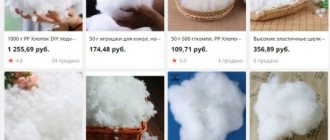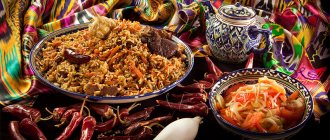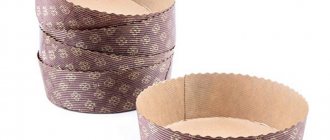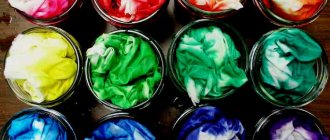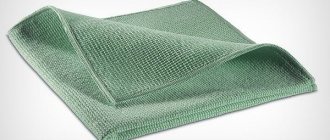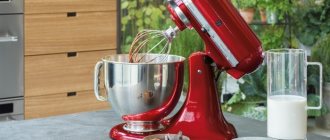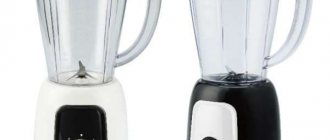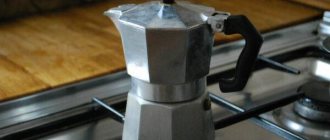11
Prepared by: Dashuta
01/03/2015 Cooking time: 1 hour 50 minutes
| Save | I cooked) | Estimate |
Want to know how to prepare a delicious dinner for the whole family in one fell swoop? To do this, we need to fry the beef, add potatoes, onions and carrots to it and put everything in the oven to stew.
Proper care is the key to longevity of glassware
Glassware for the oven will last a long time if the owner uses it correctly and takes care of it. There are some rules to follow:
- you need to heat and cool the baking sheets gradually;
- the outer surface must always remain dry, and a sufficient amount of liquid or oil must be provided inside the mold;
- Do not pour cold liquids or place cold foods into a heated mold, as this may cause it to burst;
- It is recommended to remove the glass form from the oven only with dry oven mitts;
- It is strictly forbidden to place hot heat-resistant glassware on a cold or wet surface;
- When cleaning, do not use abrasives or scrape the glass with a knife;
- The glass mold must be placed in a cold or slightly warm oven; they must be heated at the same time; glass cannot be placed in a hot oven.
Such forms are much easier to clean than baking trays made of other materials. Glass can be washed by hand or placed in the dishwasher. If the dirt is strong, you should soak the mold with water and leave it for a while, and then wash it thoroughly with a soft sponge.
Egg casserole with cauliflower and cheese
Ingredients:
- cauliflower – ½ kg;
- 2 chicken eggs;
- Dutch cheese – 100 g;
- parsley, fresh dill – 40 g.
Cooking process:
- Cook the cauliflower, adding salt to the water, and cool. We cut the inflorescences into smaller pieces and chop the greens.
- Gently, with gentle movements, mix the cabbage and greens with the eggs, beaten until foamy. Grease a frying pan with oil and place the mixture on it. Let's bake.
A simple classic recipe for stewing pork in the oven
Ingredients
- Part of pork neck meat – 0.5 kg + –
- Large white onion - 1 pc. + —
- Thick tomato paste - 1 tbsp. + —
- Premium wheat flour - 1 tbsp. + —
- Cold filtered water – 250 ml + –
- Coarse salt - about 1 tsp. + —
- Mixture of ground peppers - 0.5 tsp. + —
- Basil (dried seasoning) - pinch + -
Add all
to shopping list
Remove everything
from shopping list Shopping list
Step-by-step preparation of pork fillet in the oven with gravy
When you don't want to spend too much time at the stove, this method of turning a raw piece of pork neck into a delicious goulash comes in handy. You can also cook the sirloin part of the carcass in this way, but in this case you must add a little oil to the raw semi-finished product, otherwise the meat will seem too dry.
If you like it spicier, add chili. If you have extra carrots, grate them coarsely and add them along with onions for color and flavor (1 medium root vegetable).
- We wash the fillet, remove everything ugly and unnecessary and divide it into pieces that are not too small - about 5 cm.
- We remove the peel from the onion, divide it into two parts and cut each into a half ring. You don’t want it to be too thin, otherwise, when cooking, the onion slices will simply “dissolve” in the meat goulash.
- Now we need a deco (metal or glass) with a high side or a cauldron. A goose pan will also work. We put the meat and onions there at the same time, salt and pepper everything and season with basil.
- Place the baking sheet in an oven preheated to 200°C. No oil is needed - just enough fat on the meat.
- We remove the container (carefully so as not to get burned!) after about 10 minutes, stir the frying, and again – put it in the oven for 10 minutes.
- To fill, combine the tomato paste and flour in one bowl, add some salt and gradually begin to dilute the thick mass with water until it reaches the consistency of kefir. It is more convenient to do this with a batter whisk.
- We remove the baking sheet from the stove again, mix the contents and pour in the gravy and put it in the oven for about 15 minutes.
- Then take it out again, stir and simmer for another quarter of an hour on low heat. If the filling starts to boil away quickly, you can add a few tablespoons of water.
The answer to the question of how long to stew pork in gravy in the oven depends on the age of the animal and the amount of ingredients in the container. But on average, it will take about 40 minutes to prepare a hearty goulash.
Spicy casserole
Potato casserole can become a real culinary masterpiece if you add a couple of secret ingredients to it. Interested? Then let's cook!
Ingredients:
- potatoes – 0.6 kg;
- sweet potatoes – 0.6 kg;
- soft butter - two tablespoons. spoons;
- garlic cloves – two pieces;
- milk – 100 ml;
- cream – 100 ml;
- cheese – 150 g;
- thyme - two tables. spoons;
- salt;
- black pepper.
Preparation:
- Peel the potatoes and wash them.
- Cut the tubers into slices eight millimeters thick.
- Peel and chop the garlic cloves.
- Grate the cheese on a coarse grater.
- Preheat the oven to two hundred degrees.
- In a saucepan, combine the cream with milk, add soft butter, as well as garlic mass.
- Bring the ingredients, stirring, on a low burner to a boil.
- The sauce for the casserole is ready.
- We will “treat” the glass refractory mold with oil.
- Spread half of the potato wedges in an even layer.
- Sprinkle the potatoes with thyme, salt, and pepper.
- Spread half of the cheese shavings on top.
- Next, lay out the remaining potatoes, sprinkle them with spices, salt and cover them with cheese shavings.
- Add the sauce. It should completely cover the workpiece.
- Cover the mold with a bag and place it in the refrigerator for five to six hours.
- Then remove the bag and cover the workpiece with a sheet of foil.
- Bake the dish for thirty minutes.
- Then remove the foil and continue cooking the casserole until it turns golden and the sauce is almost all absorbed.
- Before serving, steep the casserole for ten to fifteen minutes. Ready!
The nuances of choosing glassware for the oven
When choosing a glass heat-resistant oven dish in a store, you should pay attention to its surface. A high-quality product should not have visible defects: inclusions, air bubbles, scratches, roughness and unevenness. The glass itself should be uniformly transparent without clouding; this can be clearly seen in the light.
Heat-resistant glassware must have a mark indicating its heat resistance. If there is no special icon, then the bowl is not suitable for cooking. Practical buyers should choose forms with flat lids and handles on the sides. By purchasing such a pan, the housewife will receive two bowls at once: a standard size and a shallower one.
It turns out that housewives choose glassware for ovens for their versatility, beautiful appearance and ease of care. After all, unlike other forms, food does not stick to glass baking sheets, and heavy stains only need to be soaked and waited for time. You should choose dishes without flaws, and handle them with care: do not drop them or scrape off any leftover food with a knife or a hard sponge. By following some simple operating rules, glass ovenware will last a very long time.
Author of the article: Markova E.
Oven glass and its main properties
Glassware for the oven and microwave oven is highly durable. Heat-resistant, refractory materials are used in production. The finished product can withstand heating up to 400°C.
Glasses or glasses are also made from tempered glass, but using a different technology - the material is heated to maximum temperature, then quickly cooled. The product is durable, but fragile. This glass is not used in the production of heat-resistant cookware.
Heat-resistant special glass
The material is characterized by special heat resistance. Pyrex glass is used to produce tableware . The manufacturing technology is based on giving ordinary glass the ability to withstand high heating temperatures.
Several glasses are joined together by polymerization. First, specimens of suitable size are selected, the surface is cleaned and dried. Then the surfaces are cleaned, dried, and a film with an adhesive layer and photopolymer are applied. The internal filler not only secures the layers, but also evenly distributes the heat energy. As a result, the finished product can withstand high temperatures for a long period. At the final stage, the material is fired at 650°C and cooled.
Reference. The process of glass decomposition in the natural environment takes millions of years. It is for this reason that environmentalists are calling for glassware to be taken to collection points for further recycling. Remelting finished products reduces production costs by 40% compared to producing primary products.
Silicone. Great stuff, but only real stuff
Pros of silicone molds
Nothing sticks to silicone! This is great for working with baked goods that are not easy to remove from any other pan. Silicone does not even need to be lubricated with oil, much less use baking paper. This is both convenient and economical. Plus you spend less time cleaning. Silicone molds are very easy to clean - sometimes just wiping them is enough. The resistance of silicone to everything acidic and alkaline that our food consists of also puts it beyond competition.
Baking cupcakes in silicone molds
Cons of silicone molds
Silicone molds do not tolerate high temperatures - usually above 250 ° C. This material is a poor conductor of heat. Heating the silicone takes a long time, so the inside of the dough may still be raw, but the outside will already have a fairly golden brown crust. Forget casseroles with crispy edges. Silicone molds are simply not suitable for such dishes - they are not metal!
If you buy large silicone molds, please note that when they are filled with moderately liquid mass, for example, dough, they are quite unstable and uncomfortable. First, place the mold on the wire rack and only then fill it with dough. And when dough for cupcakes or muffins is poured into small molds, they can change their shape and the baked goods will not turn out perfectly smooth.
And silicone molds, in our opinion, are champions of counterfeiting. High-quality silicone is expensive, and many manufacturers skimp on quality by selling uncertified, counterfeit products. Such forms can not only melt when heated, but also harm health by releasing toxins. Therefore, buy only products from a well-known manufacturer with proven quality. If the label contains the abbreviation FDA or CE, it means that the product has been tested by the American Quality Control Agency or it meets the standards of the similar European Committee of the European Union. And the thicker the silicone, the better.
Glass baking dish – my review, I’m waiting for yours!
I used to cook in the oven on a baking sheet or in a cast iron skillet. Sometimes in pots. It turned out delicious. But at the same time, I have long wanted to have a glass baking dish - I really like transparent dishes! It makes cooking more interesting and the dishes look more impressive!
In addition, the frying pan is not very large; to prepare dinner and breakfast for the whole family, you need something larger. And it’s not always convenient to bake on a baking sheet. If the dish is “flat” and not liquid, such as capsicums or baked potatoes, then a baking sheet is suitable. What if you are preparing a casserole or cutlets in gravy? Then you need something with high sides - such as a glass form.
And so I bought a baking dish - I’m sharing my impressions!
The first thing I cooked in it was baked meat with potatoes. I liked it so much that a couple of days later I repeated the recipe. Cabbage casserole and creamed zucchini were also great! What other recipes are there for glass molds?
What can be baked in a glass dish in the oven:
The 5 cm high sides of the mold allow you to prepare all kinds of dishes:
- Various casseroles - vegetable, potato, meat, pasta, cottage cheese;
- Stuffed cabbage rolls, peppers, meatballs in gravy - and you can pour the gravy generously without fear that it will overflow - and the more gravy, the tastier the dish!
- Baked meat, chicken, vegetables in cream, sour cream - both a dietary option “almost like steamed” and fried;
- What I especially liked is that you can even put buns or donuts - they are carefully baked there, and when they are ready, it’s convenient to pour something delicious over them right in the mold! Cinnabon buns - with whipped cream; pampushki - garlic sauce!
Therefore, a glass mold will become a necessary addition to your kitchen-oven arsenal: baking sheet, sleeve, foil, springform and silicone molds.
Recipes for glass mold:
Here are the recipes I have tested for glass molds, which you can view on the website by clicking on the pictures:
Roast with pumpkin and pork
Are glassware suitable for the microwave and oven?
In the microwave, you can use dishes made of heat-resistant and fire-resistant glass, as well as standard products made of durable and thick glass. The durable thick walls of such products do not transmit or absorb microwaves, do not deteriorate or deform, and do not heat up. Standard glass can easily withstand temperatures up to 140 degrees, fireproof or heat-resistant - 300.
In addition, glassware has the following advantages:
- Glass allows you to observe the cooking process;
- Aesthetic and sophisticated appearance. Glass plates are great for serving. And the prepared dish can easily be served in the container in which it was baked;
- Resistance to high and low temperature. Therefore, put glass dishes in the microwave and cook in glass dishes on a gas stove, and then easily put the container in the refrigerator, but only after the container has cooled;
- The glass does not heat up and does not burn your hands;
- Environmental friendliness and naturalness of the material. It preserves the beneficial properties of products. Glass containers can be used to safely prepare and store food;
- Easy care and cleaning, as particles and food residues do not stick to the glass walls. Products can be washed in the dishwasher;
- Thick walls retain heat well. A dish cooked in such a container remains hot for a long time;
- The material does not transmit or absorb microwaves, which preserves the beneficial properties of the dish.
Many people wonder whether microwave-safe glassware can be used in the oven. This is acceptable if it is made of durable and thick or heat-resistant and fire-resistant glass. Today, the market offers a variety of glass baking dishes and containers that can be safely placed in an electric or gas oven.
Unusual “French” meat
This dish is a version of the French meat we know. The meat turns out tender, juicy and tasty.
Ingredients:
- pork tenderloin – 0.4 kg;
- hard cheese – 150 g;
- mayonnaise – 100 ml;
- potatoes – 0.8 kg;
- onion - three heads;
- salt - one table. spoon;
- black pepper.
Advice! Beat the pork, covering it with cling film. Then the pieces will not break and fly all over the kitchen.
Preparation:
- We will prepare the products we need. Peel and rinse the onions and potatoes. Cut the meat into slices and beat it.
- Cut the potatoes into thin slices (two millimeters thick).
- Place some pork fat in a glass refractory dish.
- Distribute the pieces of meat. Sprinkle them with salt and pepper.
- Chop the onion into half rings and place on top of the pork pieces.
- Now distribute half of the potato wedges.
- Salt and sprinkle with pepper. Place the remaining potatoes on top.
- Bake for forty to forty-five minutes at one hundred and ninety degrees.
- Let's grate the cheese.
- After twenty minutes, carefully remove the mold and grease the potato layer with mayonnaise.
- Sprinkle everything with cheese shavings.
- Bake the dish until done.
Advice! You can complement the dish with sprigs of herbs.
Metal for the crispiest crusts
Pros of metal molds
Metal baking and casserole dishes are a fantastic conductor of heat, so when you need to reheat a dish quickly, use a metal pan or baking sheet. In a couple of minutes, the pan will absorb the heat of the oven and allow you to quickly brown the edges of the dish.
The strong thermal conductivity of metal makes it the best choice for any dishes and products from which we expect a crispy crust and complete baking - these are French fries, pizza and dishes with a cheesy, golden crust, such as snack tarts.
Metal, whether copper, stainless steel or cast iron, is best suited for recipes that require very high temperatures.
A few words about cast iron. Interestingly, the non-stick properties of cast iron only improve over time: as they are used, such cookware becomes saturated with oil, creating a natural “protective” layer.
And about steel. Food in a steel pan can be stirred with metal kitchen utensils rather than with a wooden or silicone spatula. Steel cookware is available in two types: with a mirror-polished surface and with a matte surface. It is believed that polished dishes are more hygienic, while matte ones are more resistant to mechanical damage.
Tortellini and cheese casserole
Disadvantages of metal molds
If you're baking something sour, like fruit cobbler, it's best to choose a material other than metal. When heated in a metal container, sour berries and fruits leave stains on the molds and acquire an unappetizing metallic taste. The exception to this rule is stainless steel and non-stick bakeware.
In addition, heat passes through metal quite quickly (with the exception of cast iron). The metal heats up quickly and cools down just as quickly. Therefore, if the prepared dish needs to be kept warm, metal molds (without additional heating) are not suitable for this. And one more thing - it is better not to store cooked food in metal forms, but to transfer it to a dish or place it in food containers.
Vegetable casserole with pollock and mayonnaise
The dish does not necessarily require fresh pollock; frozen pollock will do just fine. Just be sure to defrost it before you start cooking.
Ingredients:
- 2 larger onions;
- 500-600 g pollock fillet;
- 2 carrots;
- tomatoes – 3 pcs. average;
- 200 g cheese;
- mayonnaise, 100 g;
- 25-30 g dill;
- seasoning for fish;
- pepper;
- salt;
- 2-3 tbsp. l. oil for frying, vegetable.
Cooking process:
- It is better to choose a ceramic form, but you can also use an ordinary baking sheet, only with a higher side. Cover the bottom with parchment paper, preferably in 2 layers. Or simply grease the mold with butter.
- We cut vegetables: carrots into slices, onions into half rings. First fry the carrots. When it acquires an orange-golden hue, add onion to it. Sauté until the onion is transparent, this will take about 3 minutes. Set aside the vegetables and let them cool.
- Three cheese coarsely, chop the dill finely, and cut the tomatoes crosswise into slices.
- We take on the fish: salt, pepper, season with spices. Place the pieces of fish on the bottom of the mold as densely as possible, even in 2 layers.
- Place fried onions and carrots on the pollock, and place tomato slices on top. Sprinkle with dill. Sprinkle grated cheese thickly on the dill, draw a grid on top of it with mayonnaise or depict other shapes.
- We bring the temperature in the oven to 200°C, hold the pan for 30-40 minutes. A beautiful golden brown crust forms on the casserole, and it looks extremely appetizing.
If you like the fish to have a pleasant sweetness, you don’t have to add tomatoes. But if, on the contrary, you like the spiciness of tomatoes, then you can cook it that way or replace fresh tomatoes with ketchup or tomato paste.
How to Select and Use Glassware
To safely use cookware in the microwave and oven, it is important to choose high-quality, reliable and durable products. The surface of the walls and bottom must be perfectly smooth without cracks, chips, roughness or embedded air bubbles. A minimal defect will cause the container to crack during cooking.
High-quality glass should not have clouding. The thicker the walls and bottom of the pan, the more evenly it heats up and the longer it retains heat. This makes cooking faster and easier. Dishes in such dishes turn out tasty, rich and aromatic, and baked goods rise well.
After purchase, you need to ensure proper care of the products, otherwise the glass will fade over time, lose its shine and presentable appearance. Despite its high heat-resistant properties, this material is quite fragile. It can break or crack even from a slight blow.
In addition, glass does not tolerate sudden temperature changes. Therefore, heating and cooling should be smooth and gradual. Do not place hot or heated utensils in the refrigerator; wait until the utensils cool down at room temperature. Do not pour cold tap water into a hot container.
Do not put cold dishes from the refrigerator in the microwave to heat them up. When using an oven, place items in a cold or slightly warm cabinet. And after cooking, do not remove the container immediately, wait ten minutes. It is not recommended to handle a glass baking tray or baking dish with wet gloves and place a hot container from the oven on a wet table.
What other dishes can be put in the microwave, see here. And then we will look at how to properly wash, dry and store glass. After all, some detergents can scratch fragile materials. In addition, stains and marks often remain on glasses and other objects.
Spaghetti casserole with omelette, sausage and vegetables
This is an example of a multi-layer casserole that combines heterogeneous components.
Ingredients:
- spaghetti, 250 g;
- 6 eggs;
- boiled-smoked sausage – 100 g;
- 2 tbsp. l. sour cream;
- boiled sausage – 100 g;
- tomatoes – 1 pc.;
- 1 onion;
- grated cheese – 100 g;
- carrots - 1 root vegetable;
- spices, pepper, salt;
- greenery.
Cooking process:
- Prepare the omelette mixture. To do this, combine eggs with sour cream and sprinkle with spices, salt and pepper.
- We take the baking sheet on which we will bake, cover it with foil and pour the sour cream-egg mixture into it. We bake the omelette at 180°C in the oven.
- Cook the spaghetti as directed by the manufacturer. If everything is done correctly, the pasta does not need to be washed. Place in a colander and let them drain.
- Saute the carrots and onions in a frying pan, pouring just a little oil. Cut the tomato into slices and, as soon as the onions and carrots become soft, add the tomato slices. It needs a little salt.
- We cut both types of sausage into cubes and simmer with vegetables. Finally, add spaghetti to the common pot. Mix.
- Meanwhile, flip the omelette onto another baking sheet, let it “breathe” a little, covering it with a towel, and carefully remove the foil.
- Grease a baking tray and place the omelette on the bottom. Place a mixture of vegetables, sausage and spaghetti on top of it, scatter chopped herbs and grated cheese. Place in the oven and bake.
This casserole is not a single whole, as usual, because the eggs were not given such a role. The only thing holding it together is the melted cheese. Moreover, the casserole has a single “dish” - an omelette base. Therefore, it must be cut carefully and placed on plates with a spatula.
Aluminum disposable molds for ease of use
Pros of aluminum molds
Aluminum molds or, as many people call them, “foil molds” are a convenient and popular thing. They do not need to be washed as they are usually disposable. Aluminum is an excellent material for even baking and baking because it conducts heat well. It is convenient to get any food out of this form; you just need to cut the foil. Every day the range of forms is expanding. And now you can find on sale not only trays, small molds and baking sheets, but even 3-liter pans.
Lasagne in aluminum mold
Cons of aluminum mold
The collection of foil forms must always be updated, which is not entirely budgetary. Acid is also contraindicated for aluminum forms, as well as metal ones. Many bakers believe that a shiny surface interferes with the formation of the crust and that it darkens incorrectly and unevenly. In addition, foil forms do not have handles and it is not always convenient to remove them from the oven and, even more so, remove them from the coals.
Pasta casserole with meat and cheese (video)
Cheese can significantly affect the taste of the casserole. It’s one thing if you take Russian or Poshekhonsky cheese, and another thing if you take spicy cheese, combined with jalapeno pepper. In this last case, a hint of a late dinner and a glass of good wine suggests itself.
The variety of casseroles is such that it is difficult to even list them, let alone tell them in detail. Housewives are creative about them, constantly inventing new recipes. And this is right, because a hearty, tasty casserole is a ready-made dinner or breakfast.
How to properly wash glassware
For washing, use only special liquid or gel products and soft sponges. Do not use powders or aggressive compounds, hard sponges or brushes, so as not to damage the glass. Before washing, remove rings, watches and bracelets to avoid scratching the fragile material.
Rinse the dishes separately, first getting rid of food residues in warm water, then washing them with detergent. To do this, take a container or close the drain in the sink, pour in water and dilute the cleaning solution. Immerse the items one by one in the soapy solution and rinse the dishes.
Then rinse the items in water two or three times. For rinsing, you can add vinegar, a folk disinfectant, to the water. They can safely wash glass and crystal dishes.
To wash bottles and dishes with a narrow neck you will need a special long brush. If you don't have such a device, use raw mashed potatoes or shredded paper. We put the paper in the bottle, fill it with warm water and close it tightly. Shake well and rinse in clean water.
If a specific smell remains in the container after eating, pour water inside and add dry mustard. Shake the container and leave for 20 minutes. After this procedure, the products will be washed quickly and easily. Rinse items several times.
After washing and water procedures, do not wipe items with towels or napkins, but immediately place them on a towel, napkin or wire rack to dry naturally. Turn the items upside down to drain and dry, and only then put the items in a cabinet or shelf. With this type of drying, there will be no streaks or residue left on the glass.
Do not leave dirty dishes for long, but rather wash plates and cups after each use. This way, you will simplify cleaning, you will not have to clear away rubble and mountains of dirty dishes at once. Additionally, leftover food, especially in a humid and warm environment, can cause infection.
After the procedures, check how clean the dishes are washed. To do this, pour water inside so that it flows down the walls. If it flows in streams, the products are clean. If drops collect on the walls, the items have not been washed well enough.
Conclusion
Heat-resistant glassware for microwave ovens is an excellent replacement for baking sheets and roasting pans. Glass items are convenient, attractive and last a long time if used carefully and cared for properly.
The price of such baking containers allows anyone to purchase them to create culinary masterpieces with their own hands. The video in this article clearly demonstrates all the advantages and disadvantages of heat-resistant cookware. And if you have any questions, I will answer them in the comments.
Folk remedy for washing glassware
Today, many people refuse household chemicals. This is not surprising, because such compounds are aggressive and dangerous. Chemical particles remain on the dishes even after thorough rinsing. Harmful chemicals enter the body through food intake, which is very dangerous.
You can make a natural, safe and environmentally friendly product at home. To do this, take 50 grams of laundry soap, two tablespoons of soda and essential oil. Tea tree, lavender, juniper or citrus oils work well.
Grind the soap, then melt it in a water bath and add 1/2 cup of warm water and mix. Remove from the water bath and pour in another 1.5 liters of water. Then put on the fire and bring to a boil. The solution should be stirred until the soap is completely dissolved.
After this, remove the product from the stove, add soda and mix. Add 10 drops of essential oil to the mixture, stir and cool. This product perfectly removes grease and dirt, disinfects, eliminates germs and fungus, removes unpleasant odors from products and gives a light fresh aroma to items.
Assorted pumpkin - a Chinese baking option
Oven-roasted vegetables are present in cuisines all over the world. Each nation prefers to cook certain types of foods. For example, the most popular French recipe for baked vegetables is ratatouille. Find out how to bake it in the best way here
And for a step-by-step consideration, we offer an interesting Asian combination.
Ingredients:
- Pumpkin – 300 gr
- Broccoli – 180 gr
- Green beans – 180 gr
- Lime - ½ pcs.
- Soy sauce - 1 tbsp. spoon
- Rice vinegar - 1 tbsp. spoon
- Oil - 1 tbsp. spoon
- Honey - ½ tbsp. spoons
- Chili - 1 pinch
How to Roast Vegetables Chinese Style
- Cut the peeled pumpkin into oblong pieces. Separate broccoli into florets. Remove stems from green beans.
Advice.
To give the dish a real Chinese flavor, the beans can be replaced with bok choy.
- Prepare the marinade by mixing together soy sauce, oil, rice vinegar, honey and the juice of half a lime.
- Place vegetables in a bowl. Crush them with a pinch of chili and pour the sauce over them.
- Gently mix the ingredients with your hands until the sauce completely covers all the pieces.
- Place the ingredients on a baking sheet and bake everything in a hot oven for about 40 minutes.
Recipe
Buckwheat zrazy with green onions and egg. Juicy delicious cutlets and no expensive products!
Apple Pie
For dessert, bake the pie in a glass pan in the oven. The recipe is simple, the main thing is to thoroughly beat the egg whites and their yolk part.
Ingredients:
- flour (pre-sifted) – 0.3 kg;
- eggs - three pieces;
- soft butter – 65 g;
- granulated sugar – 250 g;
- milk - one glass;
- apples – 0.7 kg;
- lemon;
- baking powder - one teaspoon. spoon.
Preparation:
- Peel the apples and remove the cores.
- Cut the fruit into slices and sprinkle with lemon juice.
- Separate the whites from the yolk part.
- Let's beat the whites, as they say, to stiff peaks.
- Add granulated sugar to the yolks. Let's beat the ingredients well.
- Add soft butter to the yolk-sugar mixture. Beat this mass until smooth.
- Now add milk and beat everything well.
- Sift the flour and combine with baking powder.
- Add the dry ingredients to the liquid mixture.
- Remove the zest from the lemon and add it to the rest of the ingredients.
- Let's beat the base again.
- Add the whites and gently stir the base with a silicone spatula, moving from bottom to top.
- Add half the apples to the base.
- Mix them in carefully.
- We “treat” a glass refractory mold with oil and sprinkle with sifted flour, pour the workpiece into it.
- Cover the top of the pie with apple slices and put a few pieces of butter.
- We bake the delicacy at one hundred and eighty degrees for forty to fifty minutes.
- Cool the cake and remove from the mold. Ready!
